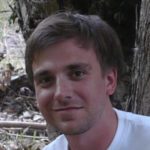Lien vers Pubmed [PMID] – 37250687
Lien DOI – 10.1016/j.lana.2023.100511
Lancet Reg Health Am 2023 Jun; 22(): 100511
Plasmodium vivax malaria is challenging to control and eliminate. Treatment with radical cure drugs fails to target the hidden asymptomatic and hypnozoite reservoirs in populations. PvSeroTAT, a novel serological test-and-treat intervention using a serological diagnostic to screen hypnozoite carriers for radical cure eligibility and treatment, could accelerate P. vivax elimination.Using a previously developed mathematical model of P. vivax transmission adapted to the Brazilian context as a case study for implementation, we evaluate the public health impact of various deployment strategies of PvSeroTAT as a mass campaign. We compare relative reductions in prevalence, cases averted, glucose-6-phosphate dehydrogenase (G6PD) tests, and treatment doses of PvSeroTAT campaigns to strengthened case management alone or mass drug administration (MDA) campaigns across different settings.Deploying a single round of PvSeroTAT with 80% coverage to treat cases with a high efficacy radical cure regimen with primaquine is predicted to reduce point population prevalence by 22.5% [95% UI: 20.2%-24.8%] in a peri-urban setting with high transmission and by 25.2% [95% UI: 9.6%-42.2%] in an occupational setting with moderate transmission. In the latter example, while a single PvSeroTAT achieves 9.2% less impact on prevalence and averts 300 less cases per 100,000 than a single MDA (25.2% [95% UI: 9.6%-42.2%] point prevalence reduction versus 34.4% [95% UI: 24.9%-44%]), PvSeroTAT requires 4.6 times less radical cure treatments and G6PD tests. Layering strengthened case management and deploying four rounds of PvSeroTAT six months apart is predicted to reduce point prevalence by a mean of 74.1% [95% UI: 61.3%-86.3%] or more in low transmission settings with less than 10 cases per 1000 population.Modelling predicts that mass campaigns with PvSeroTAT are predicted to reduce P. vivax parasite prevalence across a range of transmission settings and require fewer resources than MDA. In combination with strengthened case management, mass campaigns of serological test-and-treat interventions can accelerate towards P. vivax elimination.This project was funded in part by the Bill and Melinda Gates Foundation and the National Health and Medical Research Council.



